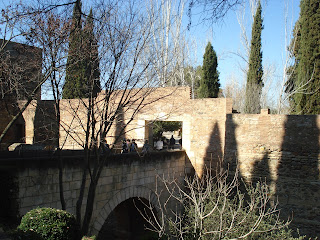A major archeological site of the Lima culture (200-700 CE)
is found in the Miraflores district of Lima, the capital of Peru. As in many
sites throughout Peru, this one contains a huaca, or pyrimid structure used for
ceremonial purposes. The above photo shows a small portion of the structure
made of adobe bricks and clay. The Lima culture was succeeded by the Wari (ca.
500-1000). My visit was on August 4, 2012.
The huaca covers a large area of several acres, much of
which has been destroyed by the urbanization of Lima. Studies of the site began
in 1967, but by 1981 it still suffered from neglect. A street runs through an
ancient section, but what remains is now a protected zone, as scientists
continue to study and map the structure. Some areas have been restored, but
much of the original construction remains.
Coastal Peru is affected by periodic violent earthquakes, so
the inhabitants learned to build with adobe bricks in a way that would resist
the movements. Instead of laying bricks horizontally, they placed them in a
vertical position, in triangular groups.
Plaza de los Ancestros, where the ancestors are buried
This (reconstructed) burial tomb contains the remains of a
man and a woman and a child. A false head sits atop the clay sarcophogus. The
woman is identified by the wool tufts that she will need in the afterlife for
her weaving. A basket of purple corn will provide the corn to make chicha, a favorite beverage.
A friendly Peruvian hairless dog, found at most
historical sites
A typical kitchen garden and livestock are kept at the site to show visitors the common food items in the ancient diet
Llamas and alpacas provide wool and meat.
Cuy (guinea pigs) are a common source of protein in Peru
Internet site in Spanish:
http://www.mirafloresperu.com/huacapucllana/index.htm












.JPG)




































